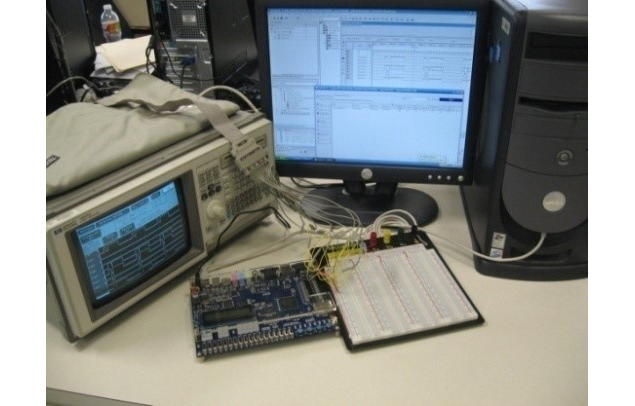Radiation Effects on Digital Circuits
PI: Prof. Weidong Kuang
Semiconductor devices are becoming susceptible to particle strikes as they shrink to nano-scale. The lab's current research focuses on the problem of soft error in integrated circuits caused by neutrons from cosmic rays or alpha particles from packaging materials. Soft error protection is very important for enterprise computing and communication applications since the system-level soft error rate (SER) has been rising with technology scaling and increasing system complexity. Now, we are applying our asynchronous methodology published in to FPGA-based digital system design. The project has been supported by DoD/Missile Defense Agency and NSF MRI.
The teachers will: (1) understand the radiation effects on digital systems, (2) be aware of basic methods to deal with the radiation effects, and (3) will participate in VHDL code writing for asynchronous circuit and simulating radiation effects in FPGAs. This project would be appropriate for science or math teachers and would strengthen curriculum in constructing and revising scientific explanations and models, using evidence, logic, and experiments, scientific notations.

